Silicone bakeware has become increasingly popular in recent years. It comes in a variety of colors, shapes and uses. Due to its many benefits, such as its durability, non-stick properties and versatility it’s become a household favorite. Silicone can be used for a variety of baking needs. While there are very few downsides to using silicone bakeware, it is generally easy to clean and maintain. We’ll explore the pro and cons of using silicone bakeware, provide expert tips for using it in the microwave and oven, discuss how to clean and maintain it and answer some frequently asked questions about this unique bakeware.

Table of Contents
What is silicone?
Silicone is a synthetic material made from silicon, oxygen, carbon and hydrogen. It is a polymer, which means it is made up of repeating units of smaller molecules called monomers. Silicone is often used in a variety of applications, including cookware, bakeware, food storage containers, medical devices, and electronics.
In laymen’s terms… Silicone is a special material that is made from some cool stuff called silicon, oxygen, carbon, and hydrogen. It’s like a bunch of tiny pieces put together that can stretch and bend. People use it for lots of things like cooking pots, baking trays, and boxes to keep food fresh.
One of the key properties of silicone is its flexibility and ability to withstand extreme temperatures. It can be used in environments ranging from -100°F to 450°F (-73°C to 232°C) without melting or becoming brittle, making it ideal for use in the kitchen and other applications where heat resistance is important.
In addition to its use in the kitchen, silicone is also used in medical devices due to its biocompatibility and ability to withstand sterilization methods. It is also used in electronics and automotive applications as a sealant, adhesive and insulator.
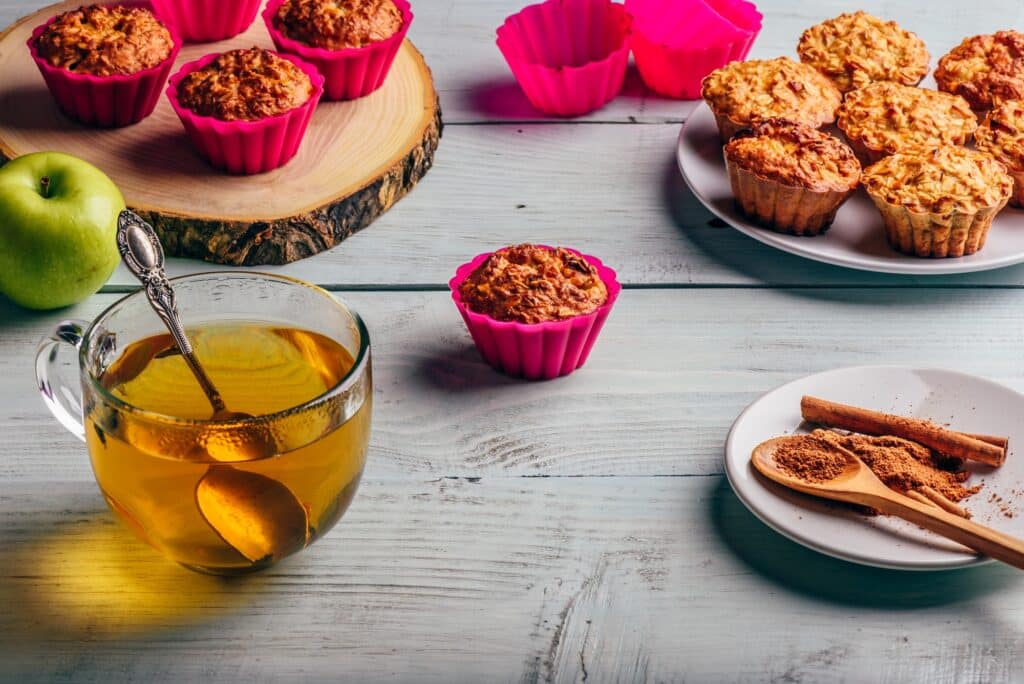
Seven Benefits of Using Silicone
- Heat resistance: Silicone can withstand high temperatures without melting or emitting harmful toxins and fumes. This makes it ideal for use in the kitchen, where it can be used in cookware, bakeware, and kitchen utensils.
- Durability: Silicone is a very durable material that can last for years without breaking down or degrading. It is resistant to cracking, peeling, and tearing, and it is also resistant to UV light, chemicals, and water.
- Non-stick properties: Silicone is naturally non-stick so it is easy to clean and release food without sticking. This means that less oil or butter is needed during cooking, resulting in healthier meals and less mess to clean up.
- Versatility: Silicone can be molded into various shapes and sizes, making it a versatile material for many applications.
- Food-safe: Silicone is a non-toxic material that is safe for contact with food. It does not leach harmful chemicals into food.
- Easy to clean: Silicone is a non-porous material that does not absorb odors or flavors. It is easy to clean with soap and water, and it can also be placed in the dishwasher for easy cleaning.
- Environmentally friendly: Silicone is a recyclable material that can be reused and repurposed. It is also a sustainable material that can be made from renewable resources.
What are the downsides of using silicone in baking?
While silicone is generally considered safe for cooking, there are some potential downsides to using silicone in the kitchen. Here are some of the most commonly cited concerns:
- Staining: Silicone can stain easily, especially when it comes into contact with certain foods, such as beets, curry, or turmeric. Even though silicone is non-stick, it can be challenging to remove these stains, which can make the silicone appear discolored over time.
- Odor absorption: Although silicone is non-porous and does not absorb flavors, it can absorb odors. This can be especially problematic if you use silicone spatulas to cook with pungent ingredients, such as garlic or onions, as the silicone may retain the odor even after washing.
- Cost: Silicone utensils and cookware can be more expensive than their traditional counterparts.
- Environmental concerns: While silicone is a relatively eco-friendly material compared to alternatives like plastic, it is not biodegradable. This means that discarded silicone products can take a very long time to break down in landfills.
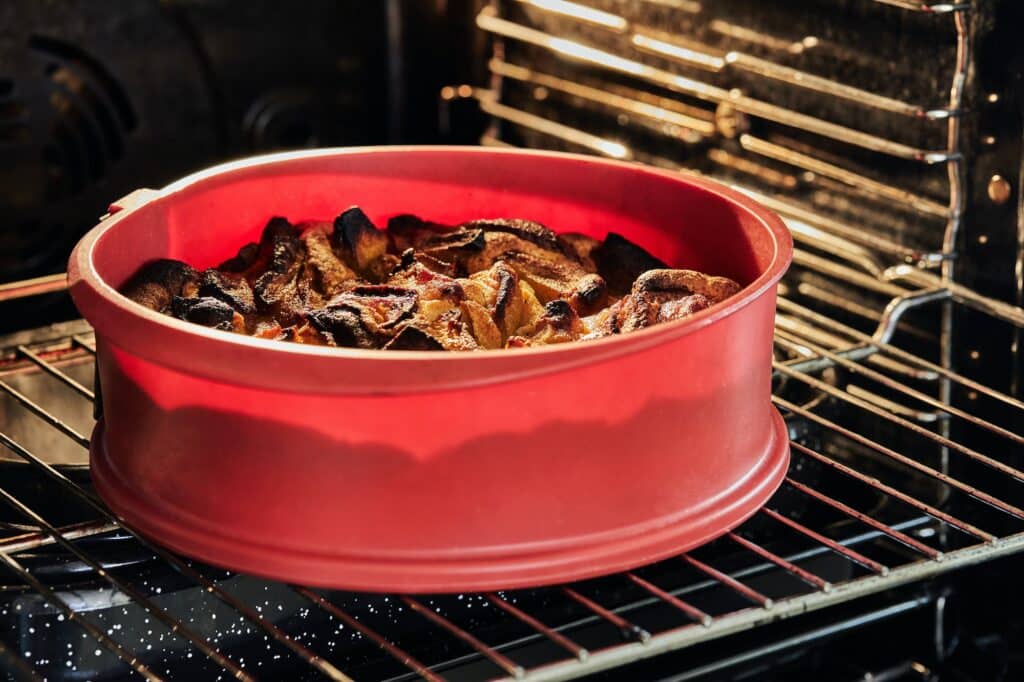
Is silicone safe and non-toxic?
Silicone is generally considered safe and non-toxic for use in cooking and baking. Here are a few reasons why we believe this is the case:
- Inert nature: Silicone is chemically inert, which means that it does not react with other substances or release any harmful chemicals when exposed to heat or food.
- FDA approved: Silicone has been approved by the US Food and Drug Administration (FDA) for use in food contact applications, which means that it has been tested and deemed safe for use in cooking and baking.
Please note that not all silicone products are created equal. Some lower-quality silicone kitchenware may contain fillers or additives that can potentially leach into food when exposed to high heat or acids. It’s important to choose high quality silicone products from reputable manufacturers and to follow the manufacturer’s instructions for use and care.
Is silicone eco-friendly and sustainable?
Silicone is a relatively eco-friendly material compared to many other materials used in cookware and bakeware and is a great alternative if you’re looking for something a bit more sustainable. Here are some reasons why:
- Durable and long-lasting: Silicone is a durable material with a high heat resistance and can withstand frequent use, which means it can last a long time without needing to be replaced. This reduces waste and the need for frequent replacement.
- Reusable and recyclable: Silicone products are reusable and can be recycled, which also helps to reduce waste and decrease the environmental impact of silicone production.
- Energy-efficient: Silicone products are often designed to be energy-efficient, such as silicone baking mats that can reduce the need for parchment paper or cooking spray, which can help to reduce energy consumption.
Keep in mind that silicone is still a synthetic material that requires energy and resources to produce so it is not fully eco-friendly. Also, some silicone products may not be recyclable, so be sure to check with the manufacturer or local recycling center for proper disposal guidelines.
Is silicone vegan?
Silicone is a synthetic material and is typically vegan. It doesn’t contain any animal products or by-products and should not be tested on animals. Please note that some silicone products may contain additives or fillers that are derived from animal sources, so it is always best to do your research and check the materials before purchasing.
Can you put silicone in the microwave?
Silicone is considered safe for use in the microwave oven, but as with most things, you should follow some guidelines to ensure that it’s being used safely.
Check that the product is labeled as microwave-safe as some silicone products may not be suitable for use in the microwave.
Please avoid using silicone products that have metal components, such as silicone bakeware with metal handles or silicone lids with metal rims. The metal can cause sparks in the microwave and potentially damage the microwave or worse, cause a fire.
You should also avoid using silicone products that are torn, cracked or damaged in any way, as this can create a potential safety hazard.
Can you put silicone in the oven?
Yes, you can use silicone bakeware in the oven. Silicone is a heat-resistant material that can withstand higher temperatures without breaking down or releasing any harmful chemicals. This makes it a safe and versatile material for use in the oven.
Here are some tips for using silicone bakeware in the oven:
- Check the manufacturer’s instructions: Before using your silicone bakeware in the oven, check the manufacturer’s instructions to ensure that it is oven-safe and to determine the maximum temperature that it can withstand.
- Avoid sudden temperature changes: To avoid damaging your bakeware, avoid sudden temperature changes. For example, do not place your silicone bakeware in a preheated oven or remove it from the oven and place it in cold water.
- Use a baking sheet: To provide additional support and stability, it is a good idea to place your silicone bakeware on a baking sheet before placing it in the oven.
- Adjust baking time and temperature: When using silicone bakeware, it may be necessary to adjust your cooking times and temperatures. Silicone can heat up quickly and retain heat, so it may cook food faster than other materials.
- Allow to cool: After removing your silicone bakeware from the oven, allow it to cool to room temperature before handling or washing.
Can you use silicone on the stovetop?
No, you should not use silicone bakeware on the stovetop. Silicone bakeware is not designed to have direct contact with the heat source, such as a stovetop burner or grill. Exposing silicone to direct heat can cause it to melt, warp or even catch fire.
Silicone bakeware is designed for use in the oven, microwave, and freezer, where it is exposed to indirect heat. It is not suitable for use on a stovetop, where it can be exposed to high temperatures and direct flame.
Can you put silicone in an air fryer?
Whether or not silicone can be used in an air fryer depends on the manufacturer’s instructions for the specific air fryer model. Some air fryers are compatible with silicone baking accessories, while others are not. Check the manufacturer’s instructions to determine if silicone can be used and if so, to ensure that the temperature and cooking time are adjusted accordingly to avoid damaging the silicone and air fryer. Additionally, avoid using silicone baking accessories that are too large for the air fryer basket or that obstruct the air circulation in the fryer.
Can you freeze silicone?
Yes, you can freeze silicone bakeware. Silicone is a flexible material that can withstand a wide range of temperatures, including freezing temperatures. Here are some tips for freezing silicone bakeware:
- Allow it to cool: Before placing your silicone bakeware in the freezer, allow it to cool to room temperature. This can help prevent any damage or warping that may occur if it is placed in the freezer while still hot.
- Cover or wrap it: To prevent freezer burn and to keep your food fresh, cover or wrap your silicone bakeware tightly with plastic wrap, aluminum foil, or a freezer-safe lid.
- Avoid sudden temperature changes: When removing your silicone bakeware from the freezer, avoid sudden temperature changes by allowing it to thaw slowly at room temperature before placing it in a preheated oven.
- Check for damage: Before using your silicone bakeware again, check it for any damage that may have occurred during freezing. If there are any tears, cracks, or other damage, it is best to discard the bakeware to avoid any safety hazards.
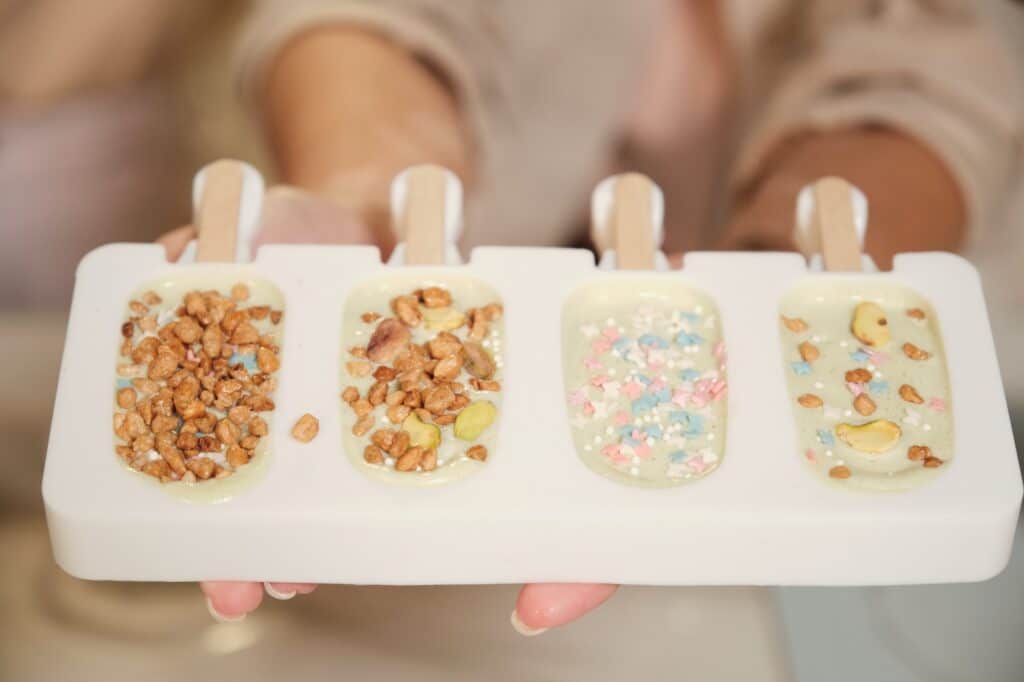
Tips for Using Silicone in Baking
- Choose high-quality silicone products: Look for silicone products that are labeled as microwave safe or oven safe, and choose products from reputable manufacturers to ensure that you are using good quality silicone.
- Check for damage: Before using silicone in the microwave or oven, check it for any damage, such as tears or cracks. Damaged silicone can be a safety hazard and may not work as intended.
- Use oven mitts: When removing hot silicone from the oven or microwave, use oven mitts or pot holders to protect your hands. Silicone can become very hot when heated, so it’s important to take precautions to avoid burns.
- Allow for adequate air circulation: When using silicone baking pans or mats in the oven, allow for adequate air circulation around the product. This helps to ensure even cooking and prevents the silicone from overheating.
- Avoid sharp objects: When using silicone in the oven or microwave, avoid using sharp utensils, such as knives or forks, as they can damage the silicone.
- Clean properly: After using silicone in the oven or microwave, allow it to cool completely before cleaning it. Clean it with warm, soapy water or place it in the dishwasher if it is dishwasher safe. Avoid using abrasive cleaners or scouring pads, which can damage the silicone.
How to Clean and Maintain Silicone Bakeware
- Clean after each use: This should be a given but it’s important to clean your silicone bakeware after each use to prevent food from sticking and to maintain its non-stick properties. Wash it in warm, soapy water, or place it in the dishwasher if it is dishwasher safe.
- Avoid abrasive cleaners: Avoid using abrasive cleaners or scouring pads, as these can damage the silicone. Instead, use a soft sponge or cloth to clean your silicone bakeware.
- Use baking spray sparingly: While silicone bakeware is non-stick, you can use a baking spray or a light coating of butter or oil to prevent food from sticking. However, use these sparingly to avoid buildup on the surface of the silicone.
- Remove stains: If your silicone bakeware becomes stained, you can try removing the stains with a paste made of baking soda and water. Apply the paste to the stained areas and let it sit for several hours before rinsing it off.
- Store properly: When storing your silicone bakeware, avoid stacking it on top of other silicone bakeware or heavy items, as this can damage the shape. Instead, store it flat or hang it up to maximize its lifespan.
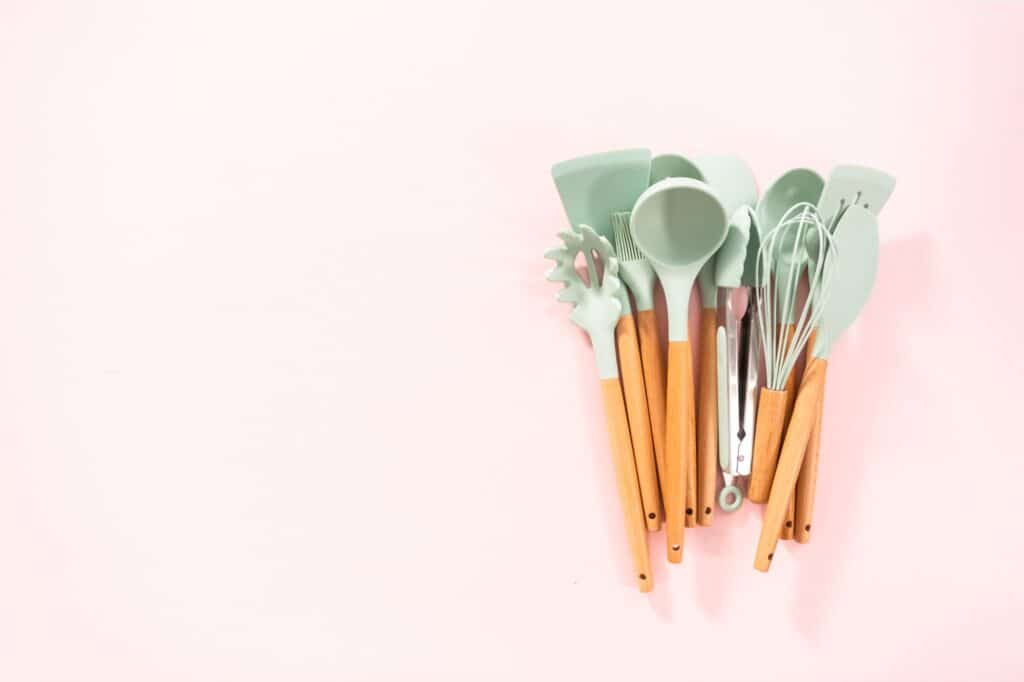
Is silicone bakeware dishwasher safe?
In general, most silicone bakeware is dishwasher safe, but it is always best to check the manufacturer’s instructions before putting it in the dishwasher.
If the silicone bakeware is labeled as dishwasher safe, then it can typically be safely cleaned in the dishwasher. However, it is still important to take care when placing it in the dishwasher to avoid any damage. For example, place it in a location where it will not be jostled around or crushed by other items.
Also avoid using harsh detergents or high-heat settings. We actually don’t put most of our silicone accessories in the dishwasher because we find the scent of the detergent is absorbed by the silicone. We’re sure if we changed to a less harsh detergent this would prevent absorption from happening.
If the silicone bakeware is not labeled as dishwasher safe, then it is best to hand wash it to avoid any damage. Hand washing with warm, soapy water and a soft sponge or cloth is typically the best method for cleaning silicone bakeware that is not dishwasher safe.
More FAQs About Silicone Bakeware
Is silicone bakeware non-stick?
Yes, silicone bakeware is non-stick, which makes it easier to remove food from the pan and makes cleanup easier.
Can you cut food directly in silicone bakeware?
While silicone is a durable material, it is not recommended to cut food directly in silicone bakeware as this can cause damage to the surface and may even cut through the material.
Can silicone bakeware be used for all types of baking?
Silicone bakeware is versatile and can be used for a variety of baking needs, including baking cakes, bread, and pastries. However, it may not be suitable for all types of baking, such as high-heat baking or broiling.
How long does silicone bakeware last?
Silicone bakeware can last a long time with proper care and use. The lifespan of silicone bakeware depends on factors such as how frequently it is used and how it is cared for.
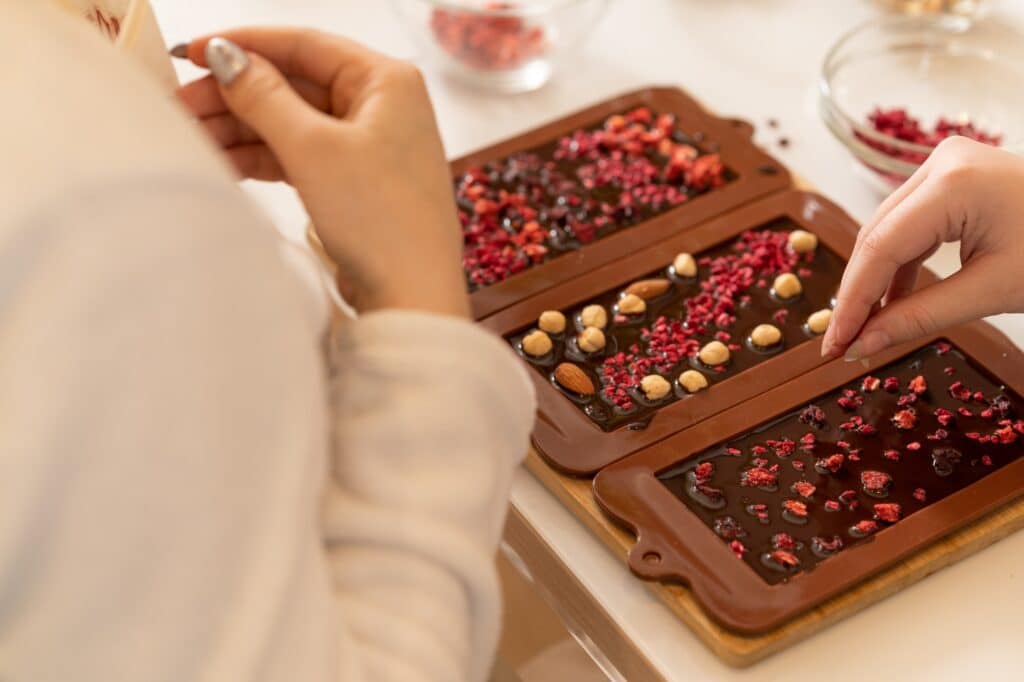
In conclusion, silicone bakeware is a safe, durable, and versatile option for baking needs. Its non-stick properties make for easy food release and cleaning, while its ability to withstand high temperatures makes it a great option for baking in the oven or microwave. With proper care and maintenance, silicone bakeware can last a very long time and reduce the need for frequent replacements. While it is important to consider the potential downsides of using silicone bakeware, the benefits generally outweigh the drawbacks. Overall, silicone bakeware is a great choice for anyone looking for a safe and durable option for their baking needs.





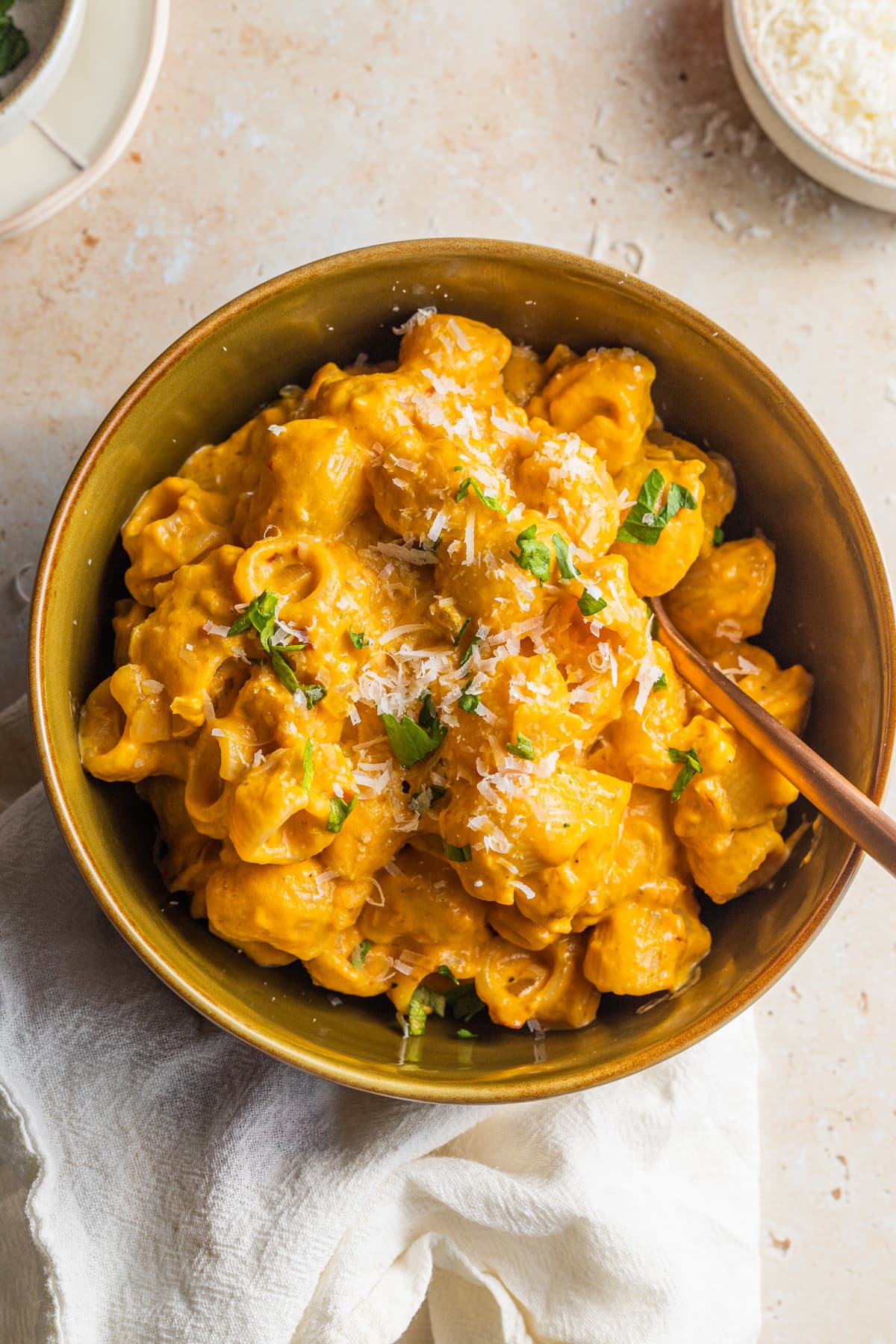

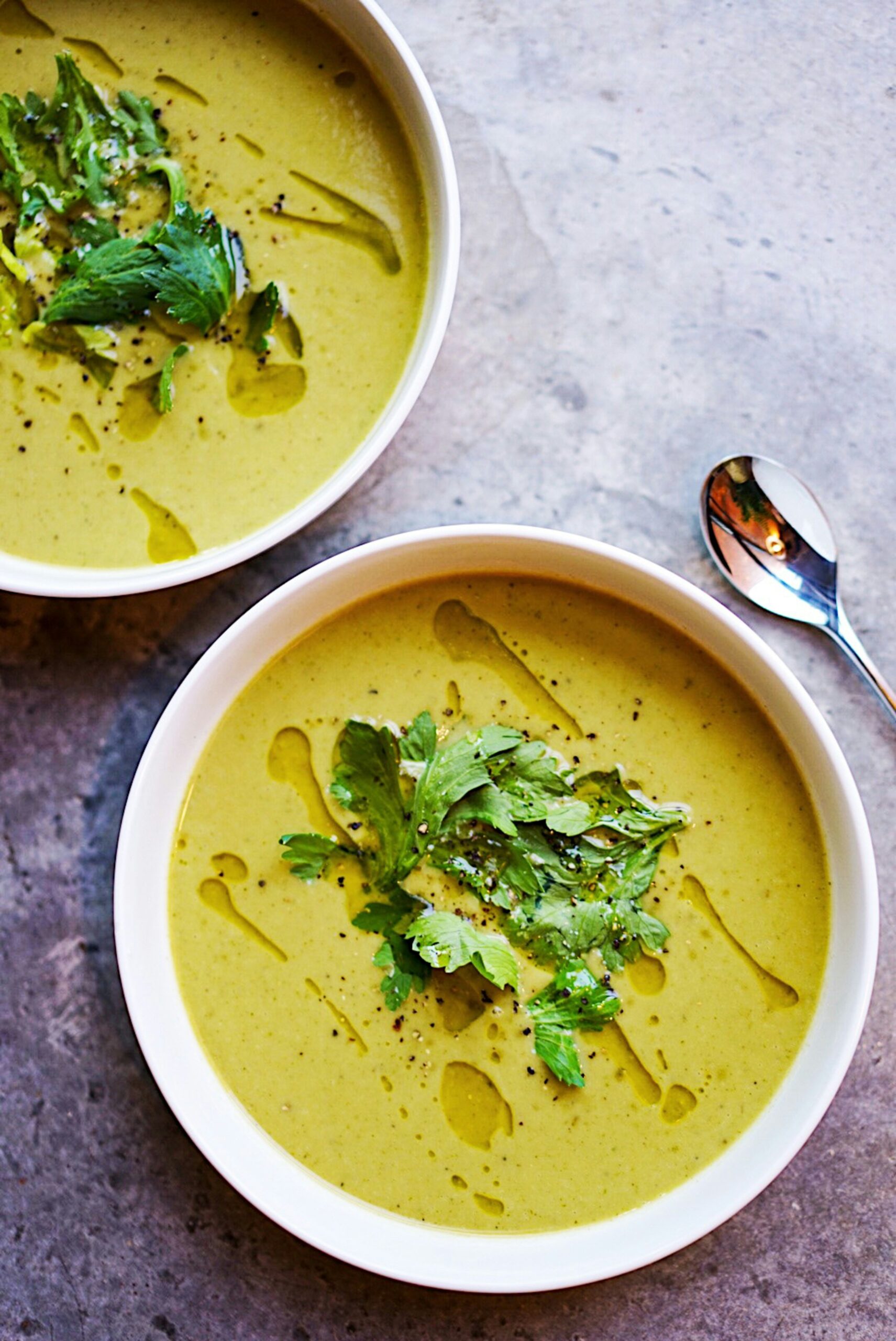
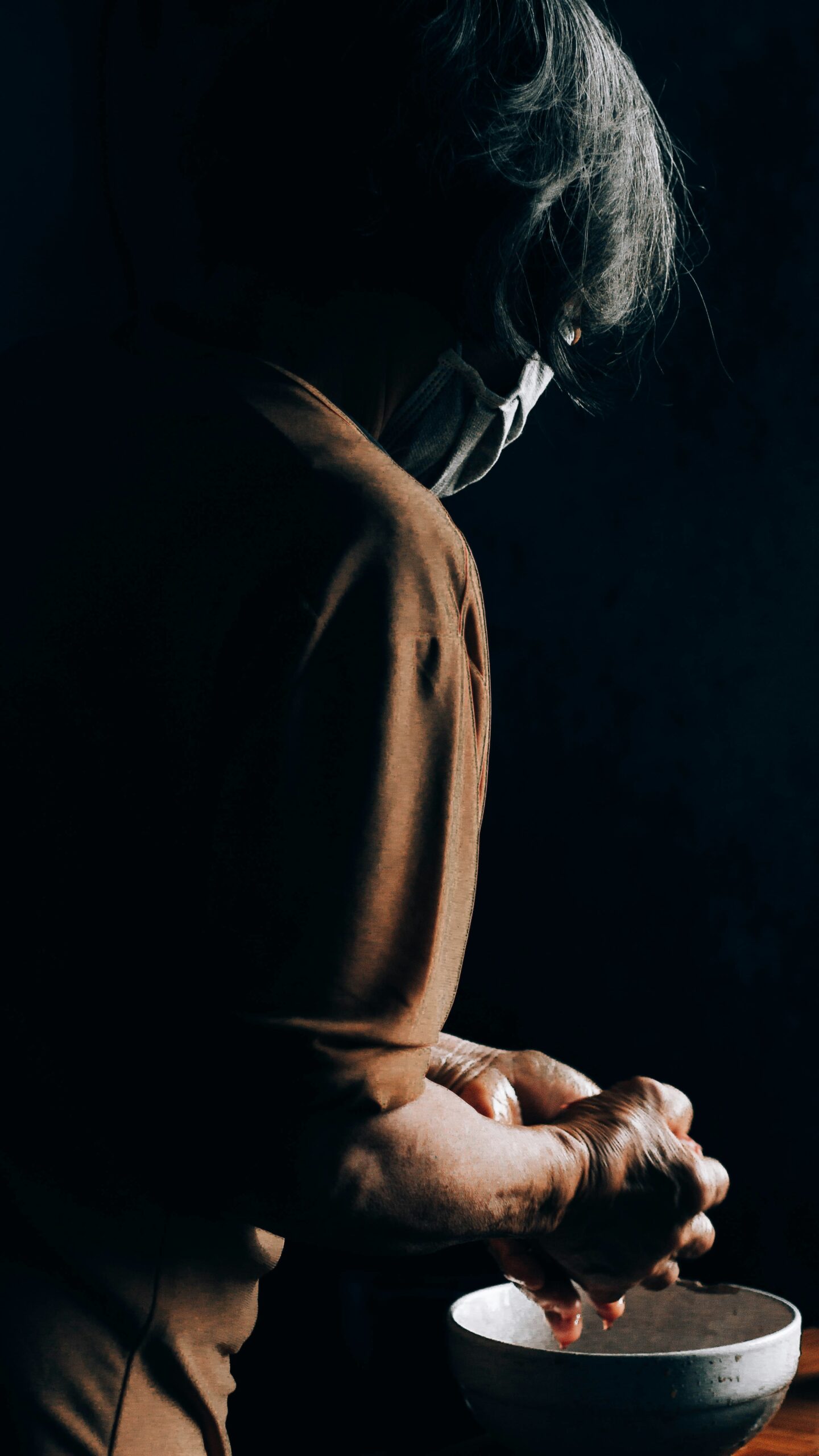
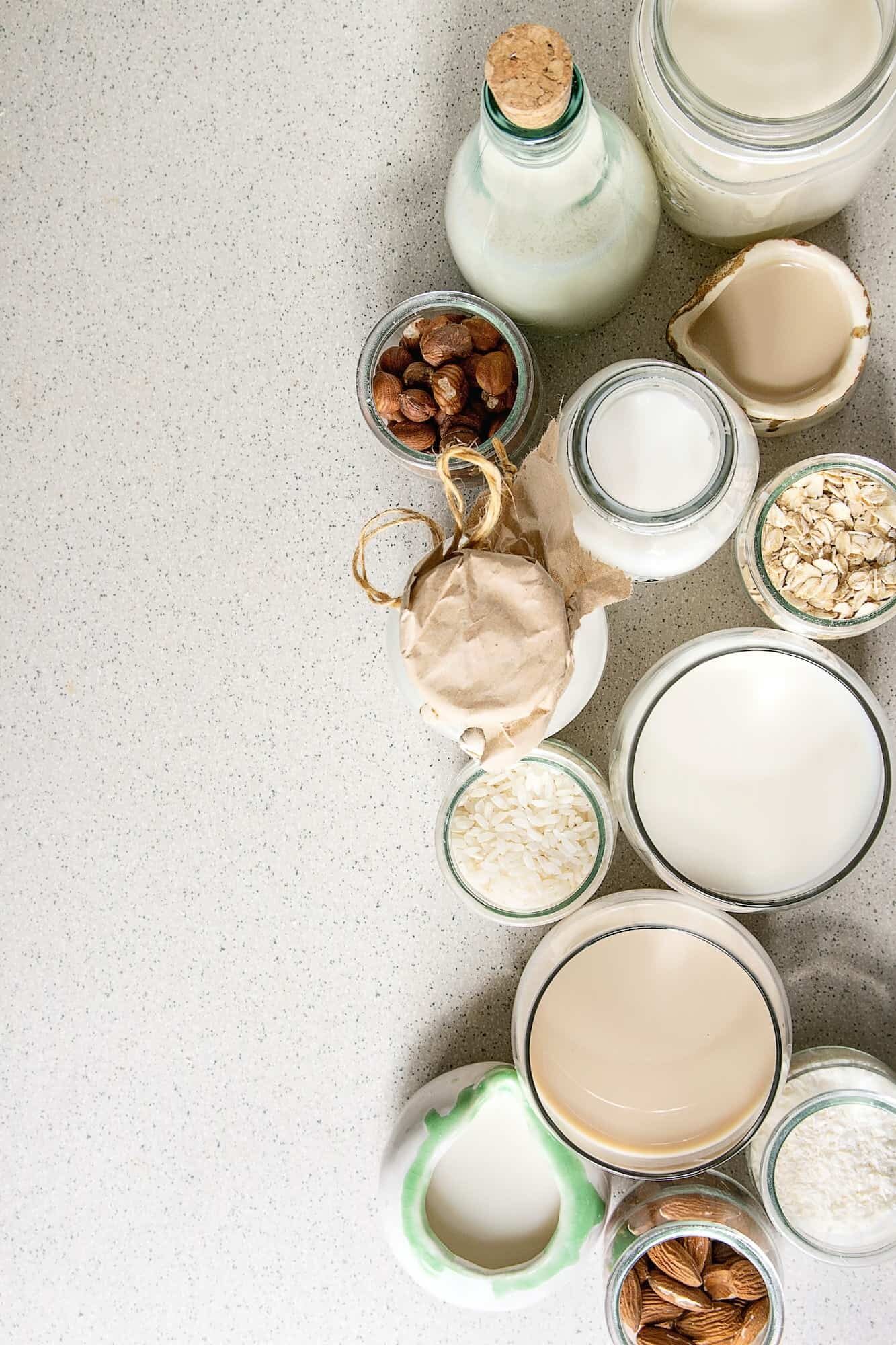
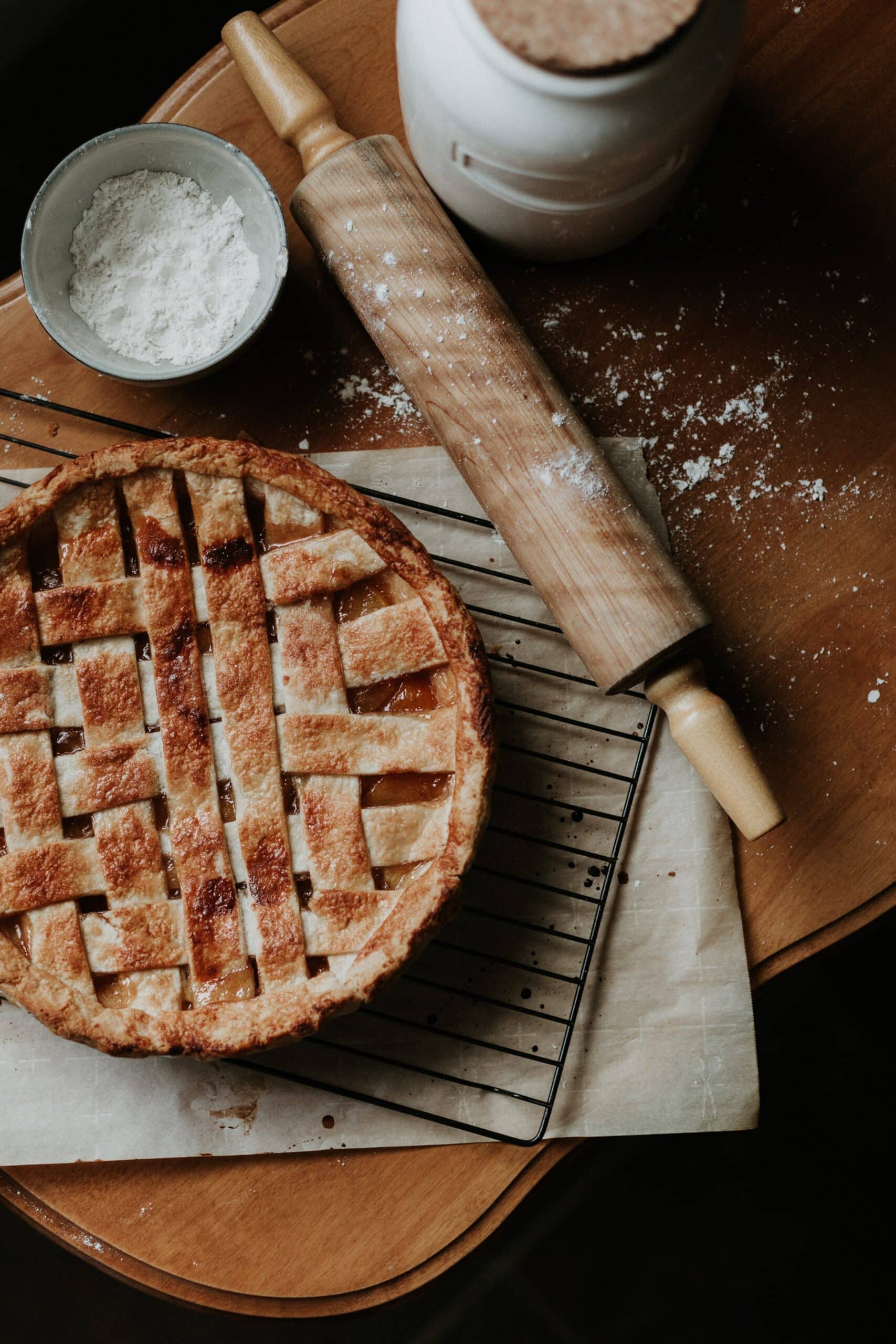
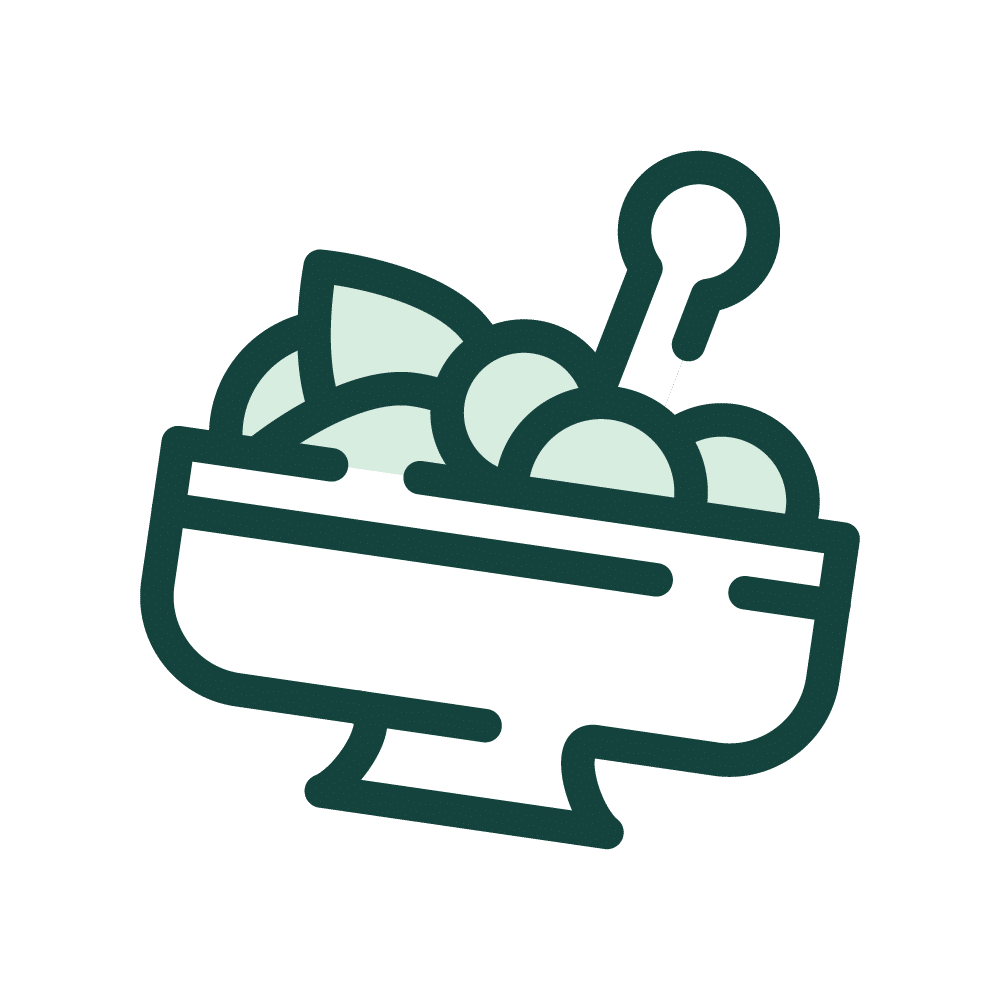
10 Responses
There are so many great tips here, for those who already use silicone bakeware and for those who are considering a switch to it! Very clear and concise information, Thank you!
I own a couple of silicone bakeware accessories and this post has so much helpful info that has helped me a lot! Thank you for the great tips.
Awesome article, I learned so much about it and now I want to buy a few more silicone bakeware. I’m all for baking soda and water to clean the stains, particularly with the cupcake liners I use.
Thanks for the great tips! I definitely haven’t been taking care of mine properly. Will change that from now on!
Thank you for this detailed post how to take care of my silicone bakeware. I will for sure take better care of mine moving forward
Thank you for these tips! Some of my silicone muffin cups were stained but the baking soda paste took them off, finally!!
Thanks for these tips! I always store my silicone stacked, but since this isn’t the best way I guess I should find another. Do you know of any storage products that make storing it easy?
Thanks for all the information and tips! I have been thinking of switching over some of my bakeware and had many questions. I am so glad I read this. Have a fantastic night, and thanks again!
I’m about to move into my first home and I’ll be getting some new kitchen supplies. This is definitely going to come in handy. I want to make sure I don’t ruin any of my new silicone!
Thanks for sharing such a great tips. Its really helpful !